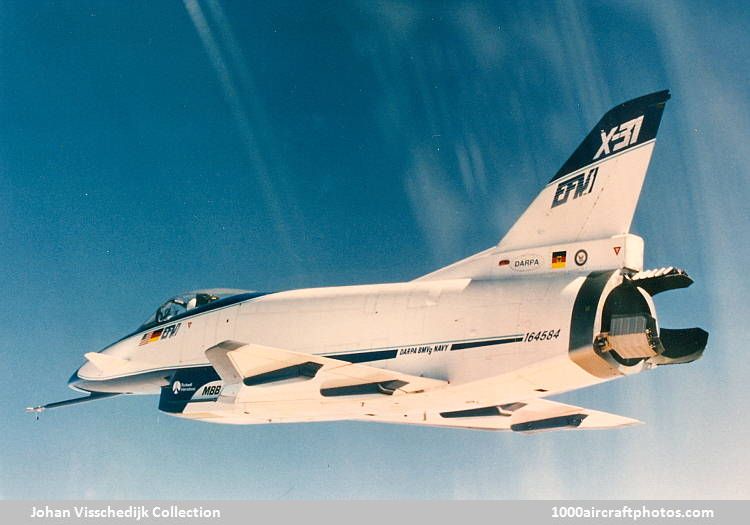09/30/2007. Remarks by Johan Visschedijk: "The Enhanced Fighter Maneuverability (EFM) program was a joint program of the USN, DARPA (Defense Advanced Research Projects Agency), and BMVg (Bundesministerium der Verteidigung, German Federal Ministry of Defense), to investigate extreme maneuverability at high angles of attack (AoA) by thrust vectoring. The X-31 was the first US X-plane developed in co-operation with another country. Ordered by the USN, the wings, thrust-deflecting paddles and several airframe parts were built by Messerschmitt-Bölkow-Blohm (MBB) in Germany and final assembly took place at Rockwell International at Palmdale, California, USA.
The first aircraft (BuNo. 164584) was flown for the first time by Rockwell test pilot Norman 'Ken' Dyson at Palmdale on October 11, 1990. The second aircraft (BuNo. 164585) was flown for the first time on January 19, 1991, also at Palmdale. Due to an ized pitot 164584 crashed on January 19, 1995, near Edwards AFB, California, the German AF test pilot Karl-Heinz 'Charly' Lang ejected safely. The remaining aircraft was airlifted to Europe and shown at the Paris Air Show in May 1995, subsequently it was placed in storage in the USA.
In the year 2000 the aircraft was revitalized for VECTOR (Vectoring Extremely Short Take Off and Landing Control Tailless Operational Research), testing very short take offs and landings with an highly accurate GPS system. It was flown in this program for the first time by Commander Vivan "Noodles" Ragusa at NAS Patuxent River, Maryland, on February 26, 2001. After the program was finished in 2003 the aircraft was put on display at the Deutsches Museum collection at Oberschleissheim Airfield, Munich, Germany."
